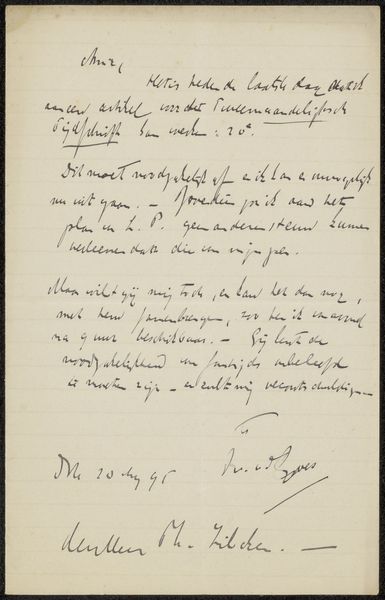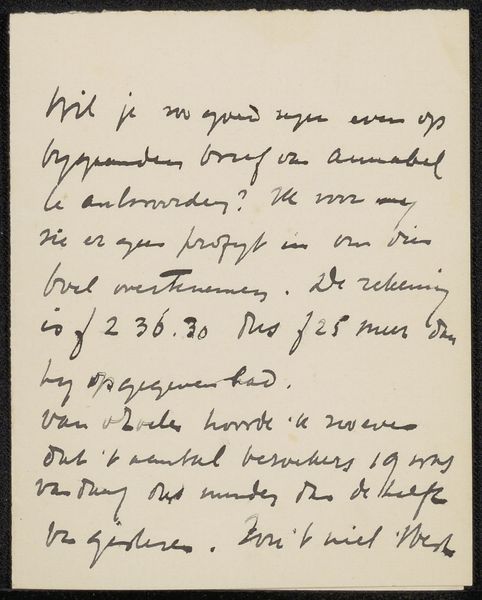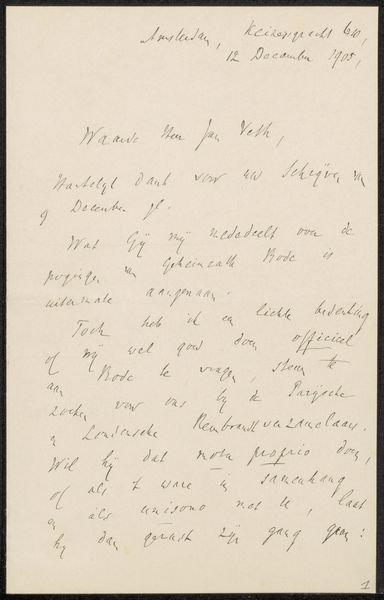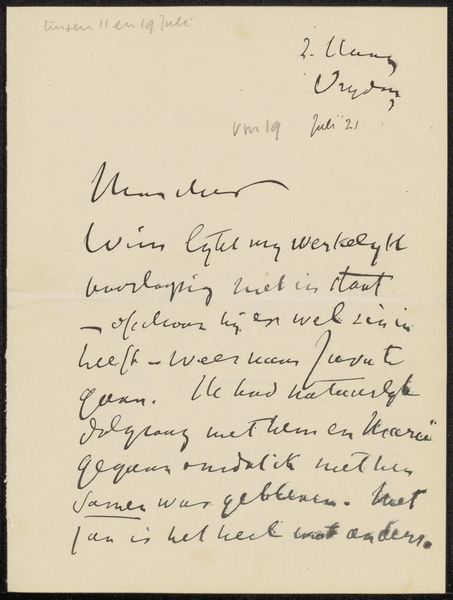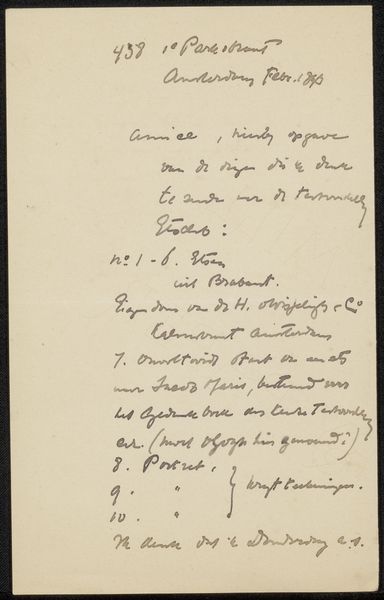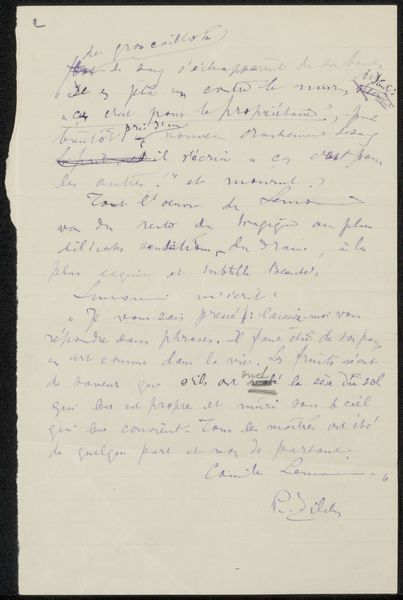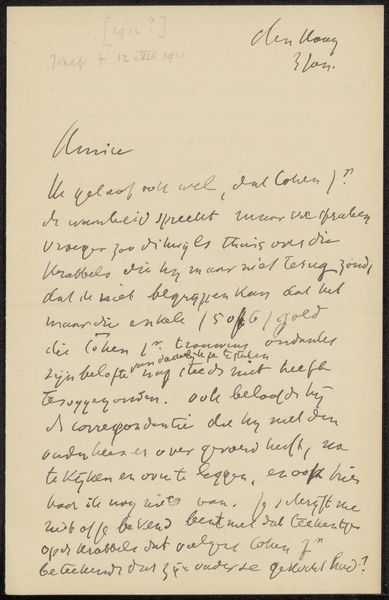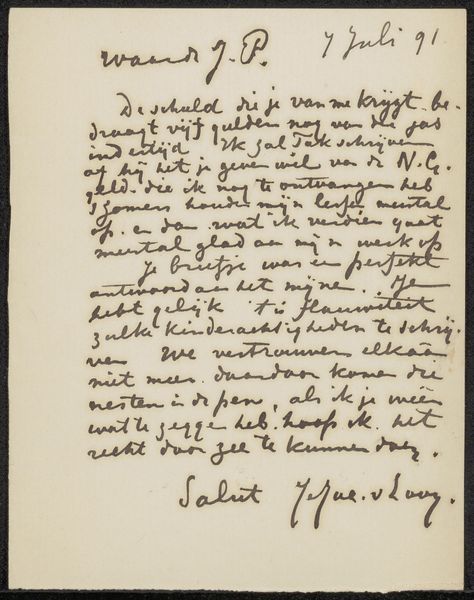
drawing, ink
#
drawing
#
pen sketch
#
ink
#
sketchbook drawing
Copyright: Rijks Museum: Open Domain
Curator: Here, we have Isaac Israels’ "Brief aan Philip Zilcken," a work rendered between 1875 and 1930, housed right here at the Rijksmuseum. It’s a fascinating example of his personal correspondence, composed with ink on paper. Editor: Immediately, the frantic handwriting suggests the pace of artistic exchange in those years, almost a hidden insight to how much work and communication was needed to promote artists and artwork. Curator: Exactly! Consider Zilcken’s role; he was more than just a friend; he was instrumental in shaping Israels’ career. Letters like this unveil the behind-the-scenes dynamics, including inquiries about catalog placements and valuations. We can glean insights into how artworks gained recognition, entered collections, and the very tangible economics that underpinned it all. Editor: Looking at this from today's perspectives, one might reflect on how the system, then and now, can inherently create barriers to the entry of non-establishment art forms that come from outsider or marginal members of society. It’s amazing that we hold this as a valuable treasure when the subtext to this communication might exclude just as much artistic brilliance as it might promote. Curator: That’s a vital point to bring into the conversation. The letter reveals that this ecosystem has historical precedents, where taste-makers actively selected and promoted art based on complex factors – be it aesthetics, marketability or connections. Editor: I feel we ought to study even innocuous materials, like this, as reflections of an entire artistic infrastructure, the people and communications networks that built or undermined a given art world, just like what’s in the frame here. Curator: Absolutely. The materiality itself – the paper, the ink – speaks to a specific historical moment before our digital overload. It’s a valuable reminder of how information flowed and relationships were maintained in Israels’ world. Editor: Indeed, pondering over this scribbled letter gives way to a better grasp on how cultural narratives are curated, literally by letters and other modes of dialogue across artists, dealers, and collectors. It shows what the business of promoting art then implied about exclusion, values, market influence and insider culture in 19th century art as much as the artistic excellence it may represent.
Comments
No comments
Be the first to comment and join the conversation on the ultimate creative platform.
